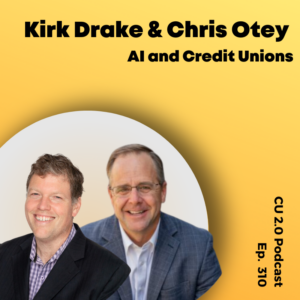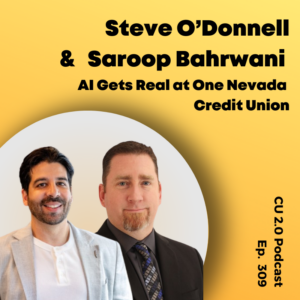Two monumental figures loom large these days:
$4 billion in consumer identity protection costs (like LifeLock), and a whopping $40 billion institutional burden to cover the fraud, and that doesn’t even include the cost of cybersecurity to combat fraud.
So how do credit unions continue to add layers of security without also adding more complexity for their members?
Authenticate, Don’t Interrogate
The initial member engagement at a credit union can almost feel like an interrogation, an unfortunately necessary evil in the face of rising identity fraud, account takeovers, and the growing threat of artificial intelligence scams.
Traditional member authentication practices encompass a range of methods, including reviewing documents, using one-time passcodes, relying on knowledge-based authentication questions, and depending on voice biometrics.
Unfortunately, these practices often lead to poor user experiences and operational inefficiencies. Worst of all, they’re increasingly open to risk for bad actors seeking to compromise accounts, particularly as AI introduces new tricks.
That’s why we like the IDgo authentication solution, as it streamlines member authentication across channels, creating a simple member experience that saves time and inspires confidence in your security protocols.
How it Works: Simplicity & Security
IDgo has managed to help credit unions blend the need for heightened security with simplicity, time savings, and versatility across all member channels.
Here’s how IDgo rises to the challenge:
- Higher Level of Security: Leveraging security features built into smart devices, IDgo eliminates the need for sharing personal information, passcodes, or voice imprints, providing a shield against account takeovers.
- Simple Member Experience: IDgo leverages smart devices that are owned and on the person of many members most of the time, enabling a simple experience that members can easily access and already know how to use.
- Time Savings: Authentication done by knowledge-based questions can take minutes, while IDgo authentication can be completed in seconds. IDgo’s integration with contact center IVR channels streamlines member interactions, offering significant time savings.
- Versatility Across Channels: Designed to work in offline channels like contact centers, IVRs, ITMs, and in-branch, IDgo adapts seamlessly to online banking applications, fortifying security in risky transactions.
IDgo allows institutions to stop being hypocritical when they say they will never ask for certain information and then proceed to ask for information when authenticating members, effectively teaching members how to be phished by bad actors posing as credit union representatives.
IDgo doesn’t store any biometrics, users control consent, and the service system is aligned with CCPA and GDPR requirements.
Part of our interest in IDgo is its track record. Rivermark Community Credit Union used IDgo to cut member authentication time from 104 seconds to 20. Unitus Community Credit Union saw similar results, as did Pioneer FCU.
The other thing that we like about IDgo is its deployment time. It can be deployed in hours, thanks to its web application, “no-code” design and integration of IDgo with an IVR or CRM system is simple with the IDGo Web API.
Ultimately, IDgo offers ease of use, convenience, operational savings and protection against fraud losses.
You can learn more about IDgo here:
Additional Resources
Like what you’ve seen so far? Sign up for our Fintech Call Program and get a personalized, 30-minute call each quarter. We’ll discuss the latest technologies and solutions, make key introductions, and offer early access to events, giveaways, and more!
And of course, please subscribe to our blog (if you haven’t already)!




